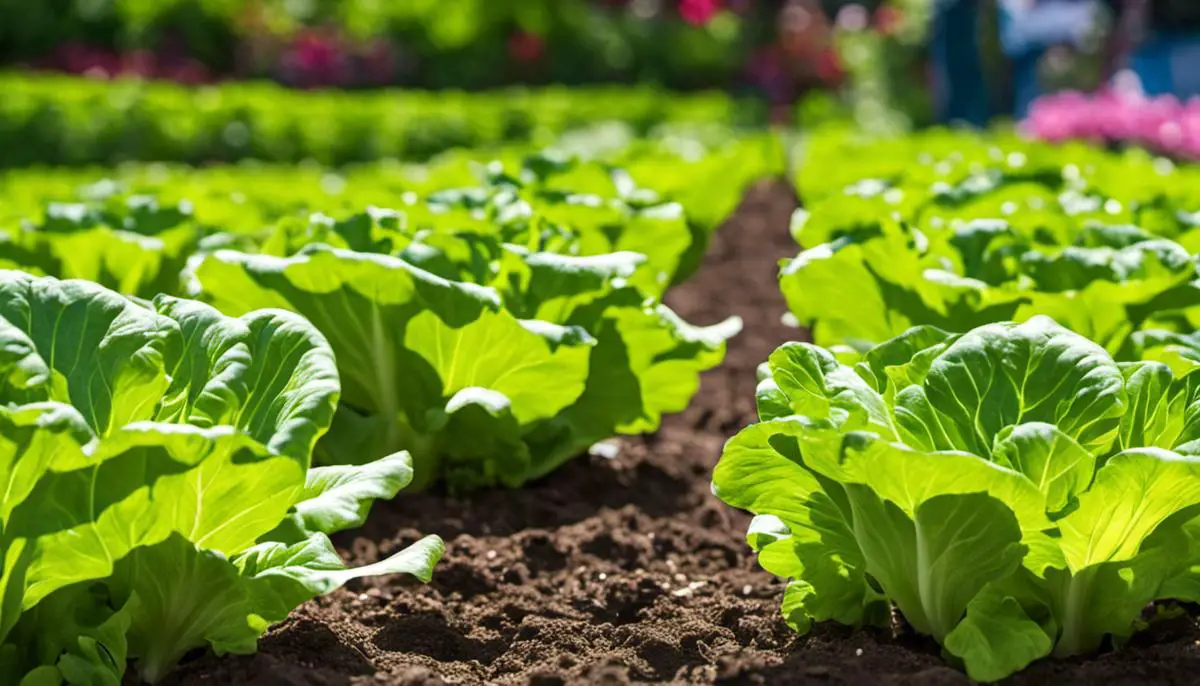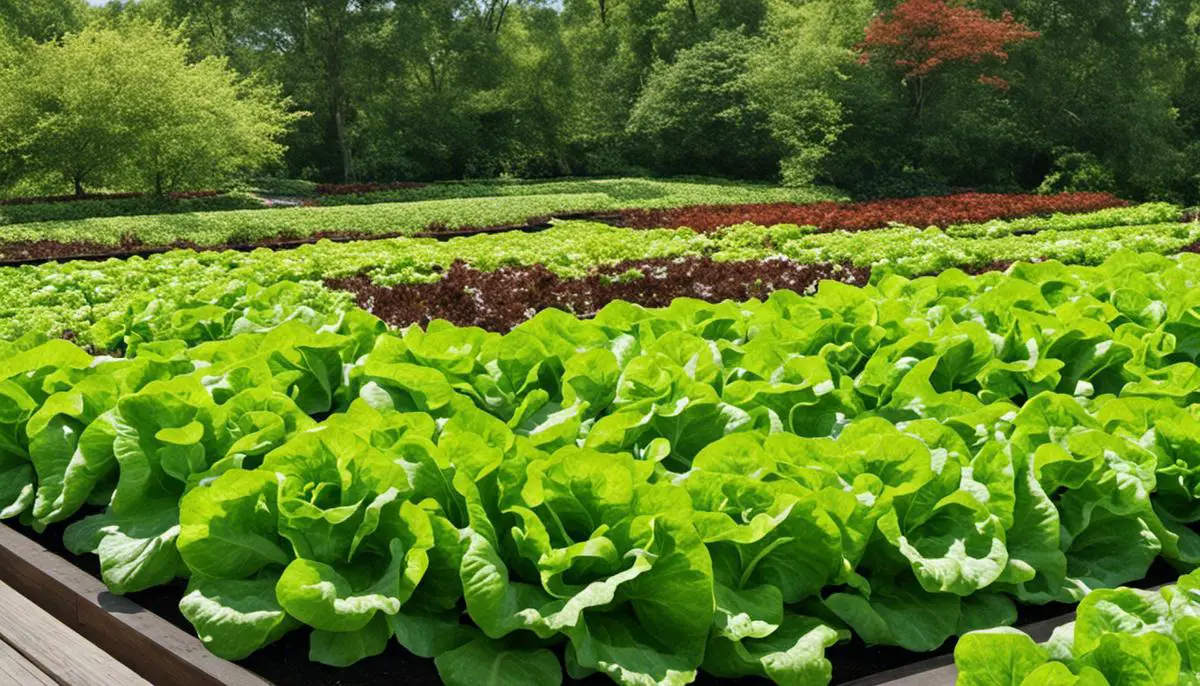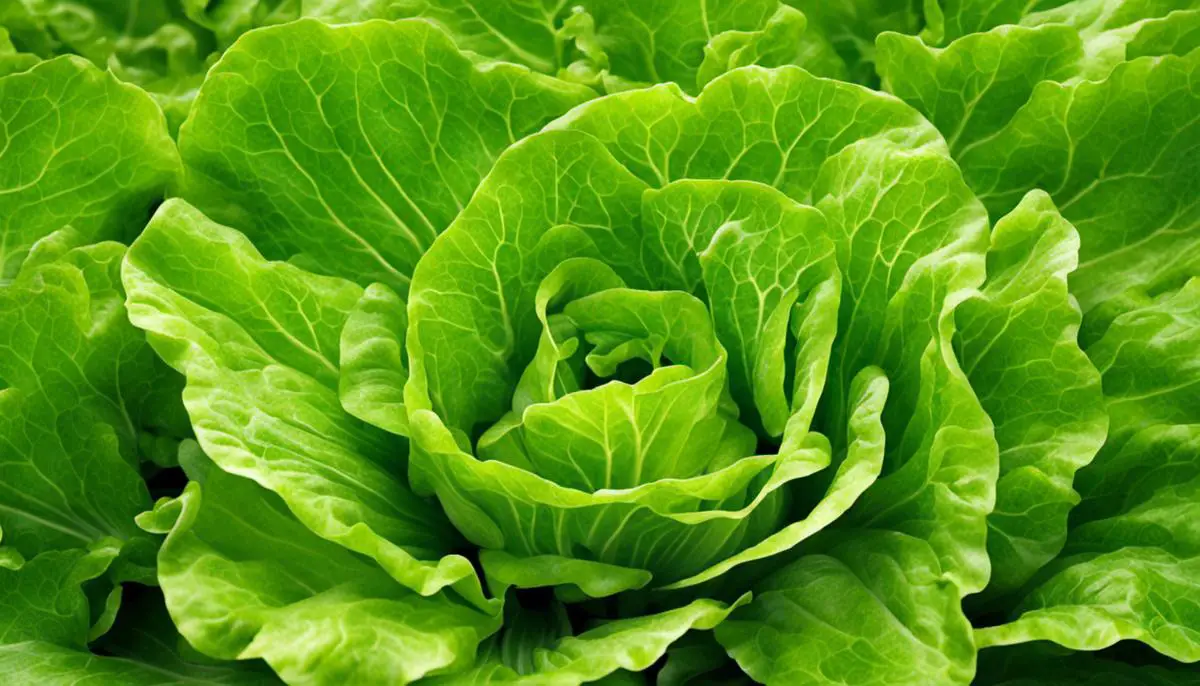Imagine having a salad made from delicious, crisp lettuce that you have grown yourself—additionally, knowing that this lettuce was cultivated organically, thus, free from harmful pesticides and potentially loaded with more nutrients. Sounds wholesome, right? Welcome to the world of organic lettuce cultivation. In this journey, we will begin by deciphering what ‘organic’ truly means and comprehend its multifaceted utilities. This involves soil amendment, the selection of appropriate lettuce varieties, and the significance of sunlight—elements crucial for setting a strong foundation for this profound venture. So, let’s delve into creating a conducive space for organic lettuce farming. Learn the importance and practice of soil testing, composting, the utilization of natural fertilizers, and how to physically prepare for planting. Sustainability is key—emphasis on fostering biodiversity, companion planting and crop rotation is essential for emulating a natural ecosystem. So, grab your gardening gloves, and let’s dig in!
Getting Started with Organic Lettuce
‘The Green Thumb Chronicles: Unlocking the Secrets of Organic Lettuce Cultivation’
They say you’re not a true gardening enthusiast until you’ve tussled with the delicate and delightful task of organic lettuce cultivation. Bursting with unmatched freshness and impeccable health benefits, making lettuce a star in your own backyard is an excellent choice. But where does one start? Unearth the essentials below for a successful foray into the world of leafy greens.
Reader Poll: What online courses would interest you?
Firstly, selection of the perfect variety has a noteworthy impact on the overall cultivation process. Popular types such as Romaine, Butterhead, and Loose-Leaf are highly suitable for backyard gardens, predominantly due to their resilience against pests and versatility in different climates. Make the most of your region’s weather and base your selection around it.
Now, brace yourself! It’s time to sow the seeds of green prosperity. This rewarding ritual involves placing seeds a quarter-inch deep and approximately one inch apart in a well-tiled soil bed. It’s a step that demands precision and patience; the healthier the spacing, the healthier the yield.
The ideal soil is paramount; organic matters here – literally. Enrich the soil with a healthy dose of homemade compost or certified organic manure for outstanding results. The soil’s pH should ideally float around 6 to 7 for lettuce to find its happy place. A soil test kit simplifies the process of achieving this optimal pH balance.
Subscribe to our newsletter!
Up next is understanding the watering ritual. Lettuce has shallow roots, making it sensitive to water frequencies. So, how much water is enough water? It’s straightforward; keep the soil moist, not drenched. Regularly check the soil and water when the top inch becomes dry. Morning watering is beneficial as it gives plants enough moisture to withstand afternoon heat yet plenty of time to dry before nighttime.
An aspect often overlooked by beginner cultivators is the careful management of the sunlight. While lettuce does love the sun, extremes can be quite detrimental. Especially in hotter climates, lettuce prefers the cooler, shaded parts of the day, and too much hot sun can lead to the discouraging process of bolting—swiftly transitioning from growth to seed production—leaving behind the farmers’ dream of crunchy, succulent leaves.
Last but certainly not least, the enjoyable art of harvesting. For most varieties, harvesting can begin when leaves are just a few inches tall. Carefully clip or pluck the outer leaves, and the plant will continue to grow new ones – it’s the gift that keeps on giving!
Remember, through organic cultivation of lettuce, you’re not only growing fresh produce but forming a symbiotic relationship with nature. Happy gardening, folks!

Preparing the Organic Gardening Space
Cultivating The Perfect Habitat for Organic Lettuce
If organic lettuce cultivation runs in your veins, you understand the sheer pleasure of watching your tiny seeds grow into a verdant mosaic of tasty leaves. However, growing these leafy greens is not simply about throwing seeds into soil— it’s about creating an ideal growing environment. Let’s explore the best practices for establishing the ultimate haven for your lettuce.
Selecting a Suitable Location
Firstly, the setting for your lettuce patch can make all the difference. An ideal location provides moderate sunlight exposure, which generally equates to about six to eight hours of sunlight per day. A spot with dappled shade or access to early morning or late afternoon sun is best for lettuce, as it avoids the heat of the midday sun that can stunt growth and lead to early bolting.
Richly Composted Soil is Essential
It’s also vital to prep your soil with an abundance of organic compost. This nutrient-rich supplement provides your lettuce with necessary trace elements and minerals that help foster robust growth and flavor. Remember, well-draining soil is also crucial to avoid waterlogged roots that could potentially lead to root rot or other fungal diseases.
Seasonal Planting Considerations
One often overlooked aspect of lettuce cultivation is the timing of planting. Despite its hardy nature, lettuce prefers cool conditions and can suffer during the heat of summer. Therefore, consider planting early in spring or late in summer for a fruitful fall harvest.
Pest Control Strategies
Organic lettuce is a favorite snack for a variety of garden pests. Regularly check under the leaves for any signs of damage and take timely action to manage pests. Organic methods, such as introducing beneficial insects like ladybugs or using a gentle insecticidal soap, are excellent measures to protect your leafy greens.
Rotation Planting and Companion Planting
Rotation planting and companion planting are two organic cultivation strategies that can boost your lettuce growth. Rotation prevents the buildup of diseases specific to lettuce, keeping your garden healthy. On the other hand, companion planting with crops like onion or garlic can help repel pests naturally.
Utilizing Greenhouses or Cold Frames
Lastly, for more experienced gardeners, investing in a greenhouse or cold frame can extend growing seasons. These structures provide controlled environments, allowing your lettuce to flourish well beyond its traditional outdoor limitations.
Cultivating organic lettuce is not just a hobby; it’s an art. Successfully growing these delicious greens involves a well-rounded approach, incorporating various techniques from the selection of location to the strategic use of planting methods. Happy lettuce growing!

Planting and Caring for the Lettuce
Organic Lettuce Cultivation: Best Practices for Unbeatable Harvests
Complement your love for greens by mastering the art of organic lettuce cultivation. Once you’ve chosen your variety, sowed your seeds, understood the proper watering and sunlight needs for lettuce, and aced the harvest, it’s time to delve deeper into this satisfying pursuit of gardening. We’re talking about location, soil, seasons, and pest control, among other important practices.
Location is pivotal in lettuce cultivation. Look for a spot that provides ample sunlight but isn’t overly hot or dry—an area that receives around six hours of sunlight a day makes for an ideal location. While the soil is already enriched with organic matter, it could still benefit from yearly additions of organic compost. Organic compost promotes a sustainable ecosystem within your soil, providing necessary nutrients and encouraging beneficial organisms.
Consider seasonality for optimal growth. Opt for the cooler periods at the start of spring or the end of summer, ensuring the most favorable temperatures for lettuce. Remember, lettuce is a cool-season crop and doesn’t tolerate high heat well. Keeping in mind the local climate and considering the weather fluctuations can help plan the right time to plant.
Naturally, cultivating lettuce attracts certain pests. Aphids, slugs, and rabbits may find your lettuce just as appetizing as you do. To protect your plants, consider applying organic pest control strategies. Introducing natural predators such as ladybugs for aphids, and creating barriers or deterrents for larger critters can effectively safeguard your lettuce without resorting to harmful chemicals.
And remember, lettuce is an ideal candidate for rotation planting. This means planting different crops sequentially in the same place. It not only maximizes the use of space but also helps thwart pests and diseases while improving soil health. The same holds true for companion planting. Cultivating lettuce with vegetables like carrots or radishes can not only maximize space use but also inevitably enhance the overall health of your garden, increasing biodiversity and supporting beneficial insects.
If your passion for lettuce drives you to harvest even in colder months, consider using a greenhouse or cold frames. These can help extend the growing season and enable you to enjoy fresh lettuce year-round. Greenhouses create controlled environments perfect for growing lettuce, while cold frames act as miniature greenhouses, proving ideal for smaller gardens or if you’re just getting started with extended-season growing.
The joy of growing your own lettuces is untold, that unbeatable satisfaction of seeing your delicate seeds transforming into robust heads of lettuce, ready to add crunch to your salad. Happy gardening!

Harvesting and Storing Organic Lettuce
Having extensively discussed how to cultivate the perfect lettuce in your garden, it’s time to shift gears and learn about preserving organic lettuce for long-lasting freshness. By doing this, the hard work, time, and love invested in growing healthy and vibrant lettuce won’t go to waste. Let’s get into it!
Harvesting lettuce at the right energy phase is key. This means that it’s best to collect your lettuce in the cool morning hours when the plants are bursting with life. The fresher the lettuce when it’s plucked from the ground, the longer it will stay fresh. Ambitious hobbyists may even feel industrious enough to harvest the night before consumption, ensuring the lettuce at its peak freshness.
When harvesting, avoid tearing or bruising the leaves. Use a sharp knife to cut the whole head at the base, or use your hands to gently twist the head from its root. Pulling lettuce out by the roots can agitate the soil and disturb neighboring plants.
Once harvested, it can be tempting to run to the hose to rinse off any remaining earth, but hold off for a second! If you wash your lettuce before storing, you risk causing faster spoilage due to excess moisture. You can instead shake off the bulk of the dirt and wait to wash until you are ready to use the lettuce.
As for storage, gently wrap your unwashed lettuce in a paper towel to soak up any excess moisture, then carefully place it into a plastic bag or storage container. You want a bit of airflow around the lettuce, so don’t pack it too tightly. A tip for the particularly keen gardeners—never freeze your lettuce! Cold temperatures will rupture the cell walls, leaving you with a mushy, wilted mess.
For those serious about their lettuce longevity, vacuum sealing might be an option to explore. This method of storage removes air from the package prior to sealing and can significantly lengthen the life of your produce.
Keep your stored lettuce at the front of the refrigerator to remember to consume it while it’s fresh. Also remember, home-grown organic lettuce lacks commercial preservatives, so eat it up while it retains its crisp freshness.
Time to enjoy your green bounty! Whether it’s a simple Caesar salad or the crunch in your beloved burger, you get to savor the product of your own hands—pure and fresh lettuce grown with love and patience.
Learning the craft of gardening, with all its intricacies, is a fantastic hobby, a fulfilling journey tinted with the green of the earth. When you munch on that crisp lettuce leaf from your own garden, you’ll know—it doesn’t just taste of freshness; it tastes of accomplishment. And that is something to share, to bring others into the green fold, because it’s more than just a hobby—it’s a way of life.

Having navigated through the lettuce’s journey from seed to plate, we have uncovered the different stages involved in cultivating this green leafy vegetable organically. More than just a simple act of growing, harvesting, and storing lettuce, this process is a testament to responsible and sustainable agriculture. Through organic farming techniques such as proper pest control and resourceful watering, you’re not only nurturing your lettuce but also the environment. Remember, timing is crucial in ensuring a continuous lettuce harvest. Know when to harvest, how to cut properly, and the best ways to wash and store your harvest. The fruits of your labor should come in the form of crisp, fresh, and green lettuce. However, some common issues may still arise but fear not — we’ve also covered organic solutions for them. So, whether you’re tending to your garden, enjoying the fruits of your hard work, or simply appreciating the natural world around you, remember: every organic lettuce leaf you grow is a step towards a healthier and sustainable future.

